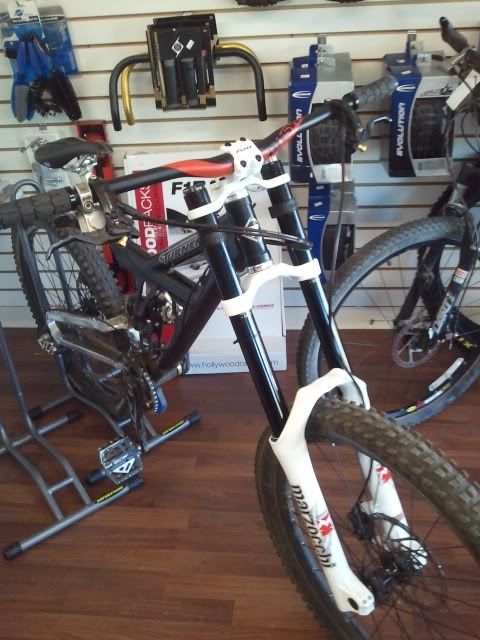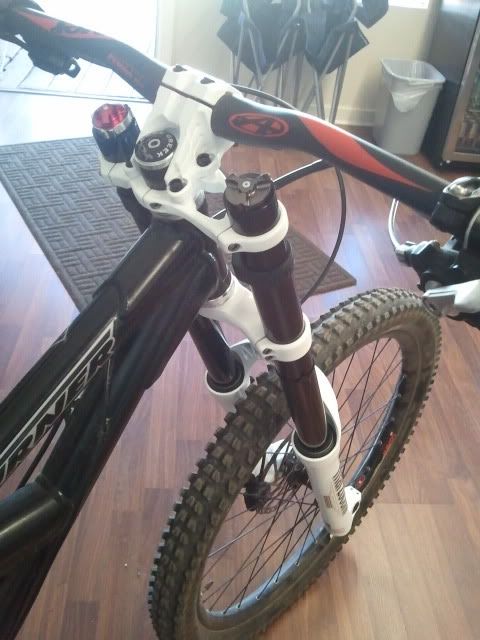I already posted this on another site, but the ridemonkey peeps seem to always be up to date on all the new suspension stuff.
Really excited about this baby. I only have one ride on it so far and am very happy with it. I just turned up the preload a little, turned in 4 clicks of compression, rebound I'm still messing with. The volume adjust is really tight and I could only get about 2 clicks out of it now. I've been told it should loosten up a bit once it gets ridden more. I think my mechanic said it was 7.4lbs? Bushings feel really tight. Fork feels buttery smooth on the fast rocky trail I took it on.


Really excited about this baby. I only have one ride on it so far and am very happy with it. I just turned up the preload a little, turned in 4 clicks of compression, rebound I'm still messing with. The volume adjust is really tight and I could only get about 2 clicks out of it now. I've been told it should loosten up a bit once it gets ridden more. I think my mechanic said it was 7.4lbs? Bushings feel really tight. Fork feels buttery smooth on the fast rocky trail I took it on.



 oh well, if you can live with the added weight, i believe that the cr+avy is the best route to go.
oh well, if you can live with the added weight, i believe that the cr+avy is the best route to go.
 Kinda like a YZ250f.
Kinda like a YZ250f. ) of your own relatively easily, this is all the fork 99% of riders will ever need!
) of your own relatively easily, this is all the fork 99% of riders will ever need!